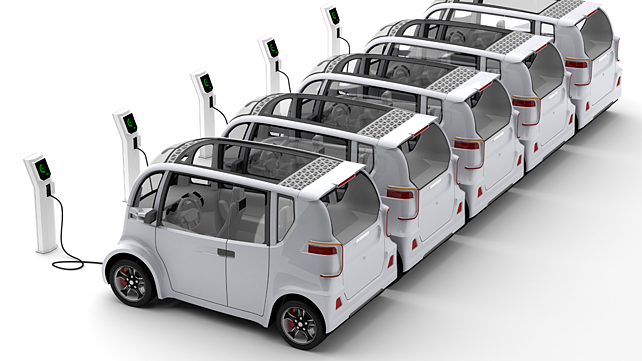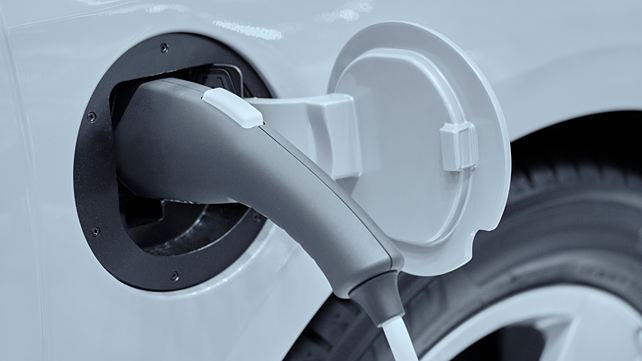
The article is co-authored by Vasundhara Thakur and Samiha Singh
The electric vehicle dream in India is powered by two- and three-wheelers, with respective shares of 46% and 49% of total EV registrations in 2021. A robust network of charging infrastructure, supportive government policy, and localisation of supply chain ecosystem are vital for the enhanced adoption of EVs in the country.
While much has been said about Central-level policies, State-level policies are playing an important role in driving the uptake. At one level, the Central- and State-level policies are complementary, as we discuss in this article.
The National Electric Mobility Mission Plan (NEMMP) 2020, drafted by the Department of Heavy Industry, Ministry of Heavy Industries & Public Enterprises in 2012, had a target to achieve sales of 6-7 million hybrid and electric vehicles year on year from 2020 onwards.
Central level policies such as the FAME (Faster Adoption and Manufacturing of (Hybrid &) Electric vehicles) policy in 2015, followed by the FAME II scheme in 2019, as well as the recent production linked incentive (PLI) schemes for the auto industry and manufacturing of advanced cell batteries (ACC) are among some of the key initiatives undertaken by the Union government to spearhead electric mobility in India.
Central Schemes
The first phase of the FAME scheme was implemented through four focus areas, namely, demand creation, technology development, conducting experimental trials in selected cities as pilot projects, and improving charging infrastructure.
FAME II mainly focuses on supporting the electrification of public and shared transportation. The scheme proposes for the establishment of charging infrastructure, whereby the Department of Heavy Industry has sanctioned 2,636 EV charging stations (amounting to approximately INR 500 crore across 24 States/UTs), in 62 cities including metros, other million-plus cities, smart cities and cities of hilly states across the country, so that there is at least one charging station in a grid of 3 km x 3 km.
The inclusion of a PLI scheme for the auto sector, and the ACC scheme, in tandem with existing schemes like FAME and multiple State subsidies, provide direct fiscal incentives for brands and an indirect one in the form of investments that such a scheme is likely to invite. The objective of all these schemes is incentivising electric vehicles and alternative fuels, as well as advanced technologies. The PLI schemes have received an overwhelming response from many auto and component companies and bids for the ACC scheme.

State-Wide Initiatives
While the Central Government is formulating various schemes at the national level, several state governments have devised their own EV policies designed to jumpstart the adoption and manufacturing of EVs in their respective states.
At the state level, there have been five types of measures and incentives – supply side, demand side, labour force related, R&D and measures related to charging stations, and other network infrastructure related incentives and measures. Most states have introduced all or four of these incentives.
Several states have rolled out EV policies to increase the domestic manufacturing of the EV supply chain and catalyse a robust and self-reliant EV ecosystem in India. Measures for charging as well as purchase-related demand side measures were introduced by many states, as also registration fee and road tax waivers for EVs, capital subsidies for charging infrastructure and interest subsidy on investment exceeding a threshold.
The five states/union territories leading in terms of the electric vehicle registrations and share in total electric vehicle registrations for 2021 are Uttar Pradesh, Karnataka, Tamil Nadu, Maharashtra, and Delhi. Each State in question has approved or notified an electric vehicle policy.
Incidentally, the five laggard states/union territories in terms of these metrics, those with lowest electric vehicle registrations and share in total electric vehicle registrations, are Dadra and Nagar Haveli and Daman and Diu, Ladakh, Meghalaya, Nagaland, and Arunachal Pradesh. Of these states, only Meghalaya has an electric vehicle policy in place.
Round-Up
Despite these policies to promote the uptake of EVs, registrations (based on data from the VAHAN portal), in 2021 stood at 311,363 units, which is meagre in comparison to the number of vehicles sold in the country. There are many reasons for this slow uptake, primarily concerns regarding range anxiety, upfront cost differentials, and an underdeveloped charging infrastructure.
This is further aggravated by a dearth of diverse, viable EV products and a lack of consumer understanding of the benefits of EVs, which results in low consumer demand. While the need for EVs is undisputed, continued encouragement is critical in overcoming the barriers to adoption. The policies by the Centre and the states have addressed each of these concerns: by providing subsidies & exemptions (for the price), and encouraging charging & swapping (for the range anxiety).
The lack of products, particularly for the four-wheeler segment, could be offset when the PLI scheme takes off. This scheme is expected to galvanise localisation and wider adoption, thereby strengthening the EV ecosystem in India. A more vibrant EV value and supply chain in India requires harnessing the linkages between the industrial and investment policy to accelerate India’s adoption of EV as a low carbon strategy and net zero transition.
About the Author:Dr Saon Ray is a Professor at the Indian Council for Research on International Economic Relations (ICRIER), New Delhi. An economist specialising in industry and international trade issues, her areas of interest include global value chains, technological upgrading of Indian industries, free trade agreements and trade creation effects, technology transfer, foreign direct investment, efficiency and productivity of firms, energy and climate change related issues. Her co-authors, Vasundhara Thakur is a Research Associate and Samiha Singh is a Project Intern with ICRIER.